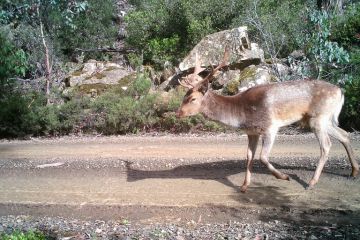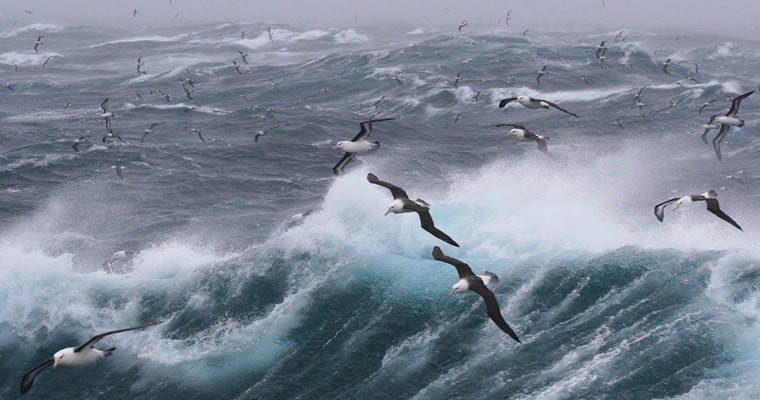
A new conservation issue emerged a couple of decades ago when Tasmanian wildlife officer Nigel Brothers showed that fishing operations were driving down albatross and petrel numbers by accidentally killing them as bycatch. The threat of long-line fishing caught public attention and led to reformed fishing practices, though seabird numbers continue to fall.[1]
An issue for seabirds globally with a much lower profile but even higher threat level is invasive species. A review of Birdlife International’s assessments of threatened birds published in Bird Conservation International in 2012 found that 75 percent of threatened seabird species are threatened or potentially threatened by invasive species compared to 41 percent threatened as bycatch and 40 per cent at risk from climate change plus severe weather.[2]
The invasive species causing problems on seabird breeding islands around the world include rodents, cats, pigs, goats, dogs, rabbits and cattle, all of which have been removed from some islands to improve seabird survival. By late 2006, rodents had been eradicated from 332 islands. Seabirds are especially vulnerable to predators on land because their extreme adaptations for life at sea render them clumsy on ground.
Subantarctic Macquarie Island was the Australian island with the best-known problems due to the combined impacts of cats, rabbits and rats. Endangered blue petrels were nesting only in small numbers on offshore stacks in the years before cats were eliminated. The problems were complicated by subantarctic skuas multiplying on a diet of rabbits and then becoming major predators of prions and other small petrels at their burrow mouths. Since a massive eradication program of cats, rabbits and rodents, vegetation has been recovering and seabirds returning to nest in growing numbers. Stephen Garnett says that ‘a suite of breeding seabirds once thought to be highly threatened in Australian territory has increased so much they can probably come off threatened species lists’.[3]

on threatened seabirds. Photo: Su Yin Khoo (creative commons licence)
Another conservation success due to an island eradication program is Gould’s petrel on NSW’s Cabbage Tree Island.[3] In 1989 it was the sole Australian breeding site with just 250 breeding pairs. Chicks were being killed by pied currawongs because rabbits had eaten out the understorey. Chicks were also becoming entangled in the sticky fruits of pisonia trees (Pisonia umbellifera). Since eradication of all three, and establishment of an additional breeding population on another island, numbers have climbed to over 1000 breeding pairs.
Another success was Lord Howe Island’s endemic woodhen, which has recovered from a population of just 10 pairs in the 1970s to 220 today due to the eradication of pigs and cats.[3] The New South Wales government is committed to eradicating rats from Lord Howe Island, and ISC is represented on the technical committee advising on the NSW Environmental Trust. Other Australian seabird islands facing predator problems include Norfolk Island, Christmas Island and Phillip Island.
References
[1] Some of this blog was previously published in Feral Herald in July 2012.
[2] Croxall J, et al. (2012) Seabird conservation status, threats and priority actions: a global assessment. Bird Conservation International 22: 1-34
[3] Garnett S. (2013) How birds are saved. Wildlife Australia 50(2): 30-32.




